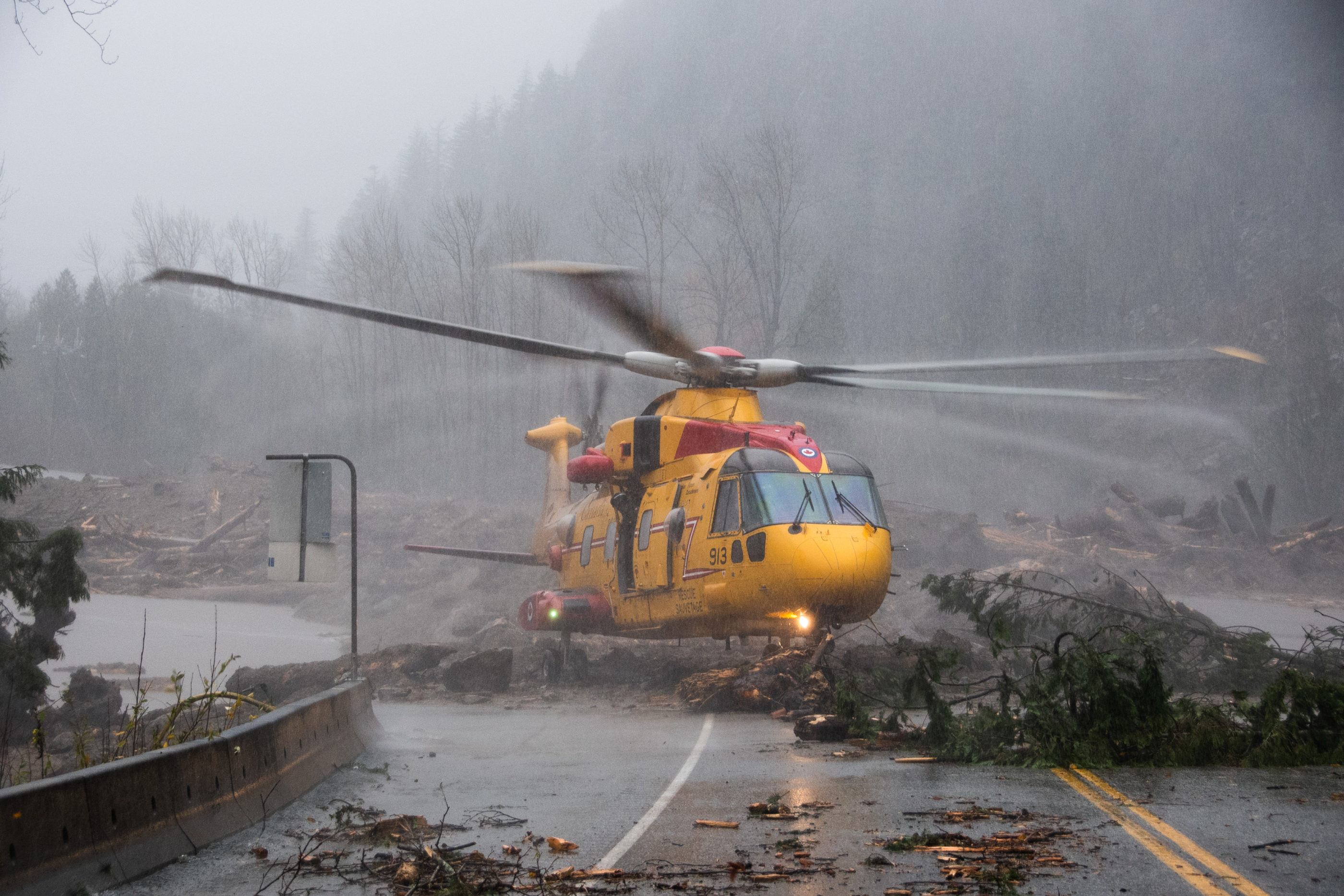Landing a CH-149 Cormorant search and rescue helicopter between the proverbial rock and a hard place is not uncommon for the pilots of 442 Transport and Rescue Squadron. But on Nov. 15, three aircrews made repeated landings quite literally between the rock face of a mountain slope stripped partially bare by a mudslide and the rising waters of the Fraser River, a landing pad along a narrow stretch of the Lougheed Highway east of Agassiz, British Columbia, strewn with shattered trees and other debris amid torrential rain and gale force winds gusting up to 45 knots. At times, the distance between the spinning rotor blades and the remaining trees and the hillside was no more than four feet.

Over 10 hours, the three crews would airlift more than 300 passengers stranded overnight in vehicles after landslides severed the highway around them.
The Royal Canadian Air Force (RCAF) squadron maintains a 24/7 standby posture at 19 Wing Comox on the eastern side of Vancouver Island, on short notice to respond to land and maritime incidents in Western Canada. An atmospheric river had been building off the coast of the province for several days, and the heavy rains had caused flooding and mudslides throughout the Fraser Valley and into the B.C. Interior. But the first call to the squadron around 5:30 that Monday morning from the Joint Rescue Coordination Centre in Victoria gave the commanding officer, LCol Jean Leroux, only modest cause for concern.
Overnight mudslides had trapped some vehicles on a stretch of the highway, also known as Hwy. 7, and pushed others off the road and onto the bank of the rising river. Details were thin, but the initial reports suggested about 150 motorists could be stranded and civilian helicopters were attempting to reach them.
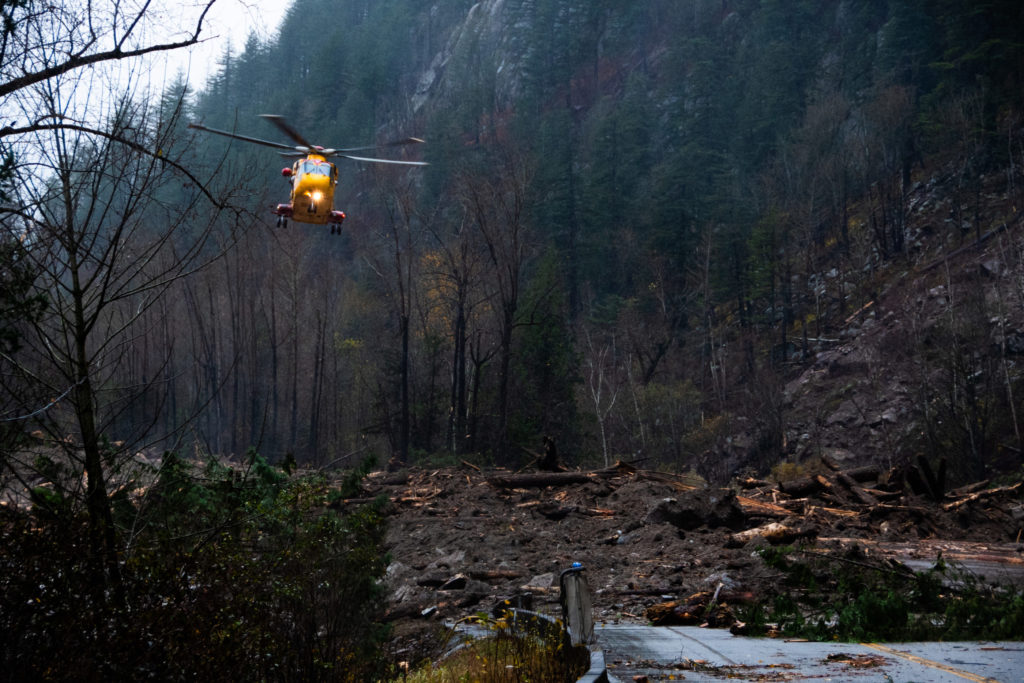
Deteriorating flying conditions would make that impossible, however, and the forecast of more rain meant the potential for more mudslides. An urgent evacuation might be required.
By the time the second call came through just after 8 a.m., 442 Squadron’s standby Cormorant was already prepared to launch. The crew of two pilots, a flight engineer and two search and rescue (SAR) technicians were tasked to land first in Chilliwack to pick up a provincial heavy urban search and rescue (HUSAR) team, a highly trained task force of medical, fire suppression, emergency response, SAR, and engineering professionals. The provincial government’s emergency management service wanted “eyes” on the highway to assess the situation and coordinate the evacuation.
No sooner had the helicopter lifted off from the runway in Comox, the squadron learned the stranded motorists now numbered at least 300, requiring a much larger effort. Sensing the problem might grow, Leroux had already activated the “recall list” for all personnel and begun assessing the availability of the squadron’s other four helicopters. One CH-149 was airborne to support a force generation exercise for a Cormorant Operational Training Flight that morning and a third was on the ramp; as is often the case, two others were in maintenance.
“That morning it was fortunate there were three helicopters serviceable and ready to go,” said Leroux. “When we explained the situation, we quickly had all aircrews available. [In addition to the standby crew of five], we notified the training crew and then added a third. Altogether we were about 20 personnel.”
Within 30 minutes, the second and third Cormorants were airborne and trailing the first CH-149 to Agassiz.
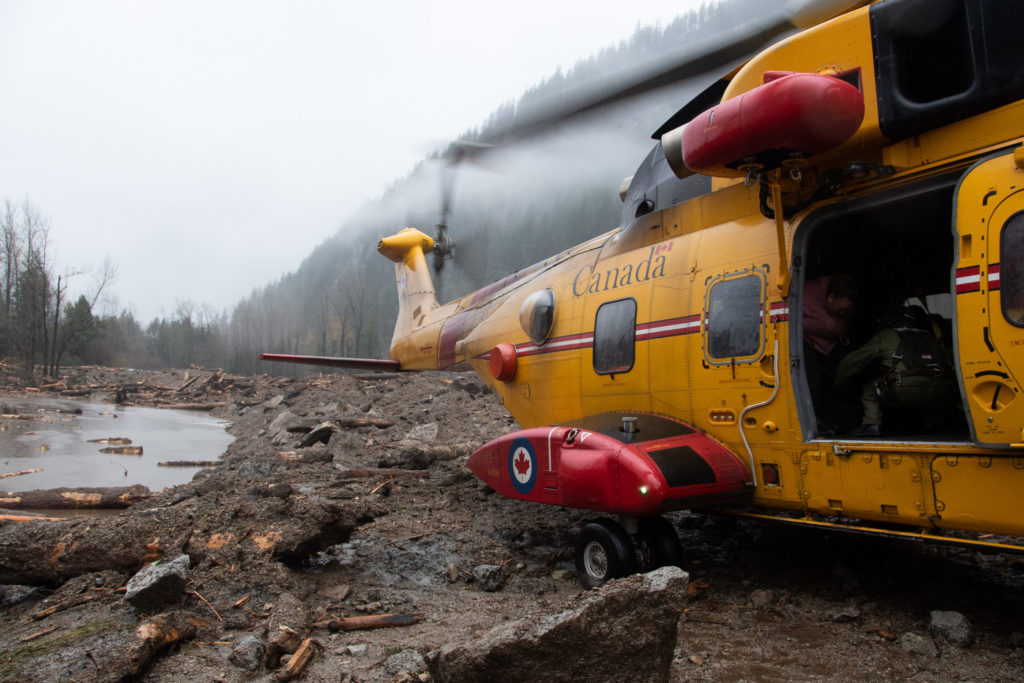
SAR squadrons are accustomed to responding with limited information, and the aircrews operate under mission command, allowing crew commanders in the air and on the ground the flexibility and freedom to act as they deem necessary. Still, activating and deploying such a significant portion of the squadron, even as he notified the RCAF chain of command, was a significant act.
Leroux knew he had the trust of his supervisor to lean forward. “It takes time to activate federal or provincial resources, so we were proactive in this case, just because of the sheer number of people that needed to be evacuated,” he explained. 1 Canadian Air Division in Winnipeg, Manitoba, to which the squadron reports, supported the decision, and assisted with the subsequent paperwork.
“The key to success, and I have been doing this for two decades, is to have the right asset at the right time,” he said. “Because there were so many people and because of the instability around those mudslides, I think the right call was made to call us in.” The seamless integration with other provincial assets “shows the strength of the system and how well that communication works with no jurisdictional obstacles.”
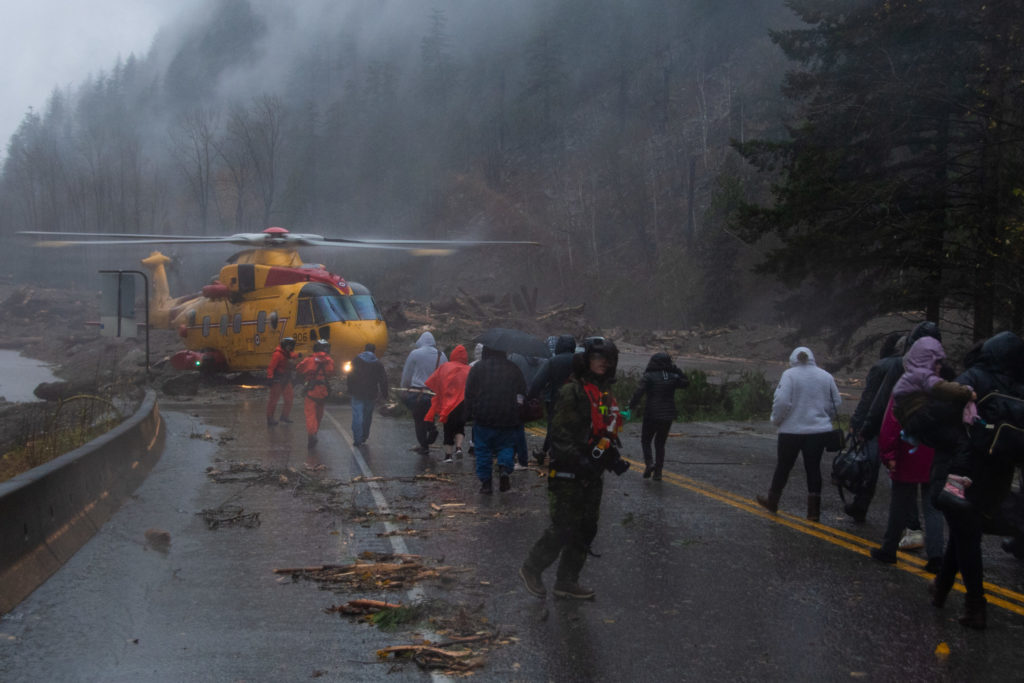
The first Cormorant covered the approximately 220 kilometers (135 miles) from Comox down the Strait of Georgia and across the Lower Mainland to Chilliwack in about 40 minutes, collected the HUSAR team, and landed on the highway 20 minutes later. “There were a lot of fatigued and vulnerable people, including small children and the elderly,” Leroux noted. “While time was important, their safety was much more critical.”
Despite persistent poor visibility that would challenge the crews throughout the day, the Cormorants immediately began airlifting people to a collection point about 10 to 15 minutes to the west. The first CH-149 on scene had departed with most of its SAR equipment and had room for about 10 passengers. The second, with less gear, was able to take 15. The third had been quickly stripped of all kit and replaced with jump seats before departing, and was able to transport around 30.
“The three choppers had a dance going” throughout the day, hot refuelling as each completed six to seven flights in and out of the hazardous landing zone. Before lifting off from the highway for the final time, SAR technicians and the HUSAR team conducted a last sweep of all stranded and partially submerged vehicles to ensure no one remained inside. By the end of an exhausting 10 hours, they had airlifted 311 people, 20 dogs and one cat.
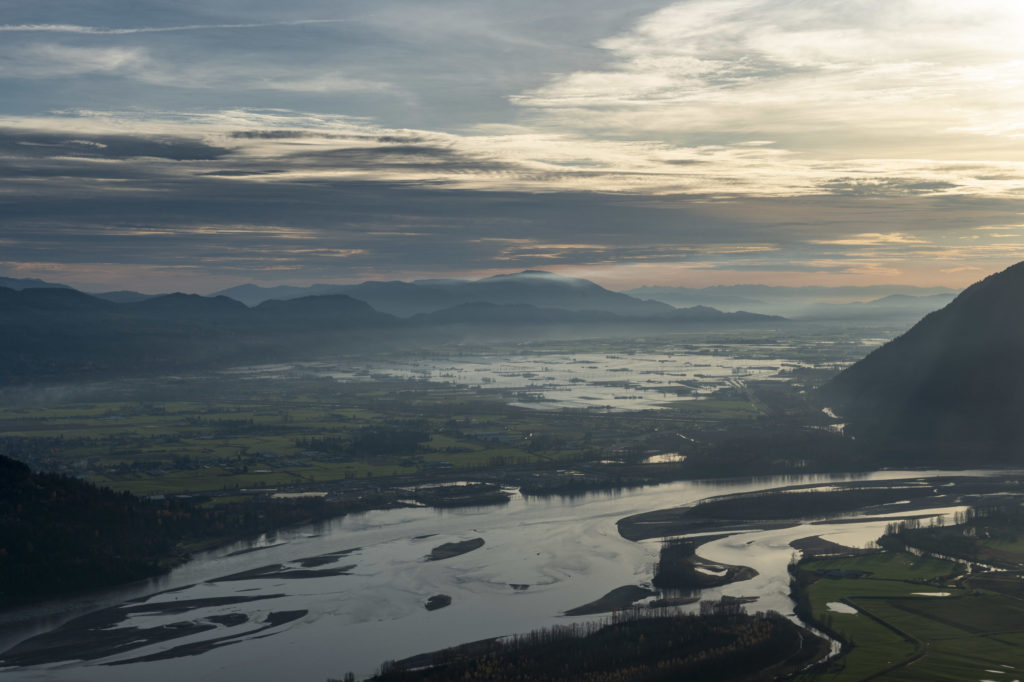
As the extent of the operation became clear, 442 Squadron had dispatched a CC-115 Buffalo transport aircraft to Chilliwack with maintainers and other logistical and technical support. Leroux also had three complete replacement aircrews for the Cormorants on standby if the airlift continued into the night.
The commitment of such a major contingent of the unit’s resources was notable. Throughout the day, 442 Squadron remained positioned for other SAR emergencies. In the late afternoon, the Buffalo and its SAR technicians were diverted to the northern tip of Vancouver Island near Port Hardy following reports of a sinking boat. That evening, a response was prepared after the crash of a Cessna R182 north of the town of Hope that killed two.
“Even though the evacuation was completed by around 8:30 in the evening, we were still busy with other cases,” said Leroux.
That the aircrews were able to execute multiple landings in such tight spaces and under harsh weather conditions is a tribute to the skill of the pilots. The cockpit of a Cormorant is usually crewed by an aircraft commander and a first officer. “By the luck of the draw, we had six aircraft commanders available that morning, so two very experienced pilots in each chopper,” he noted. “They did an amazing job of making sure they landed without any incidents.”
Leroux had planned to command the third Cormorant, but when a junior aircraft commander arrived shortly before departure, he gave her the seat. “It was a good thing because there was a lot of quarterbacking to be done from Comox,” he said. “When you launch three helicopters on short notice, it raises a lot of questions from upstairs about command authority, tasking and how the mission is going to be authorized. I knew there were going to be phone calls right after those helicopters took off and I did not want that to be a distraction. The chain of command, though, was very supportive.”
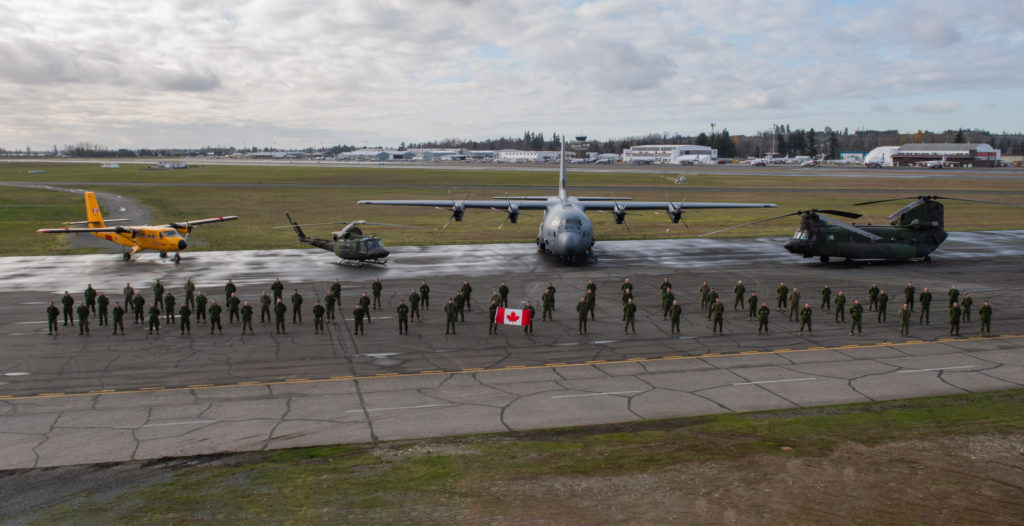
As 442 Squadron stepped down, the RCAF, in response to a provincial request for assistance from the federal government as it declared a state of emergency, stood up an air task force in Abbotsford that included CH-146 Griffons from 408 Tactical Helicopter Squadron in Edmonton, Alberta, and 430 Tactical Helicopter Squadron in Valcartier, Quebec; CH-147F Chinooks from 450 Tactical Helicopter Squadron in Petawawa, Ontario; a CC-138 Twin Otter from 440 Transport Squadron in Yellowknife, Northwest Territories; and a CC-130J Hercules from 436 Transport Squadron and a CC-177 Globemaster from 429 Transport Squadron, both in Trenton, Ontario.





